Moon Knight Annual #1
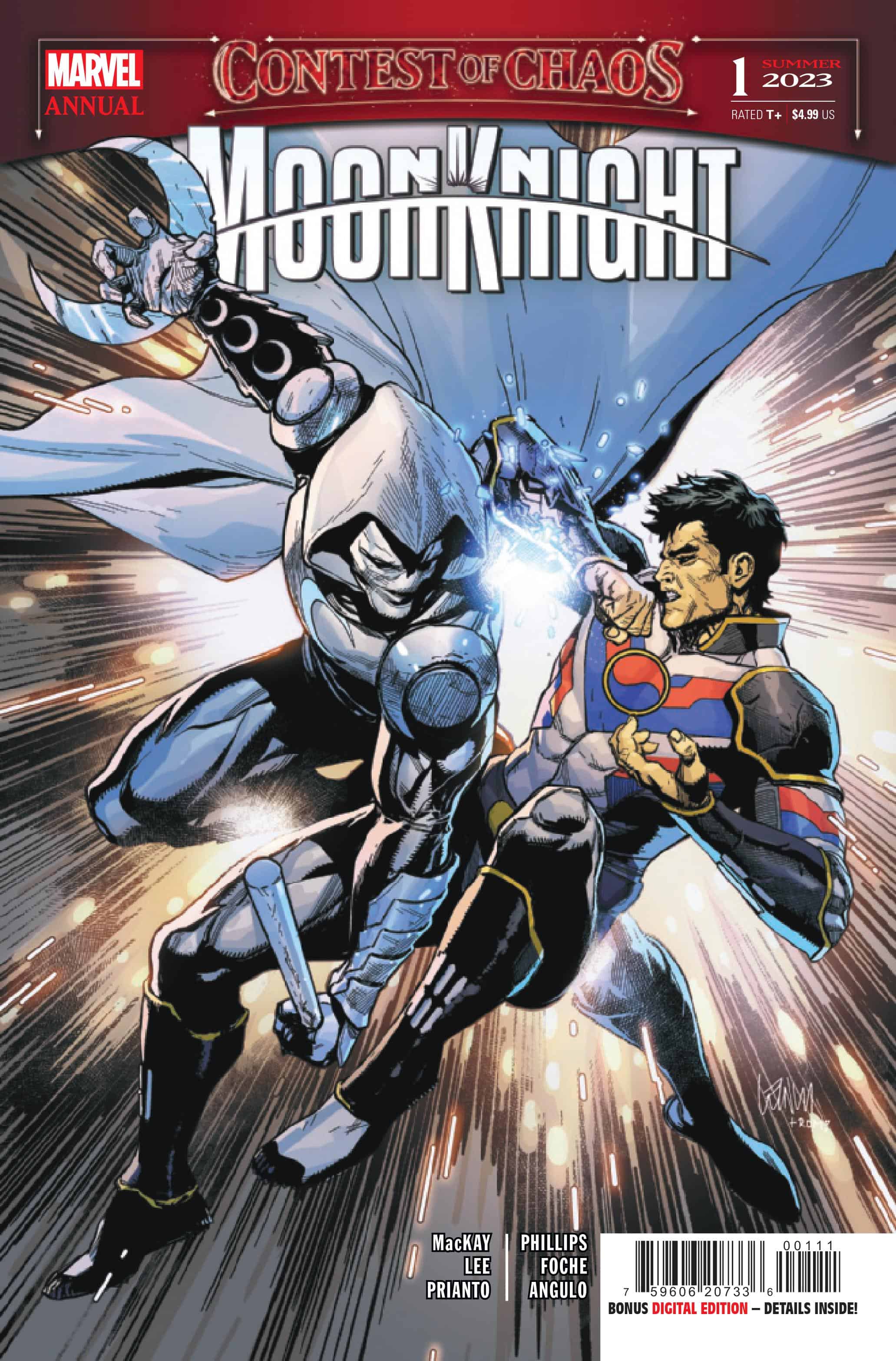
Recap
MOON KNIGHT VS. TAEGUKGI! The forces of chaos compel Earth’s heroes to go head-to-head with each other! When the champion of a god battles a godlike champion, who will win? The Fist of Khonshu faces off against Tiger Division’s fearless leader: It’s MOON KNIGHT vs. TAEGUKGI in a power-packed showdown!
Review
Warning: Spoilers for Moon Knight Annual #1
Moon Knight Annual #1 – written by Jed MacKay with art from Creees Lee, colors by Arif Prianto, and letters from VC’s Cory Petit – makes a detour from the ongoing war between Moon Knight and Black Spectre to throw the vigilante into the Contest of Chaos. The event borrows a tournament arc structure by pairing various heroes into battles by recently de-aged Agatha Harkness, who’s trying to harness chaos magic to restore the mystical world’s balance.
Previous annuals paired the likes of Spider-Man and Wolverine, Ghost Rider and the Human Torch, and even Storm and Iron Man. Now, Agatha draws Moon Knight and the Korean superhero Taegukgi (from Tiger Division) to a field filled with crystals that bind the chaos energies. As Agatha works her magic and spurns the two heroes into fighting, the crystal’s power warps reality, taking the two combatants and moving them across time and space. Moon Knight rejects the power offered to him, and leaves it for Taegukgi, offering hope the younger hero will not lose himself.
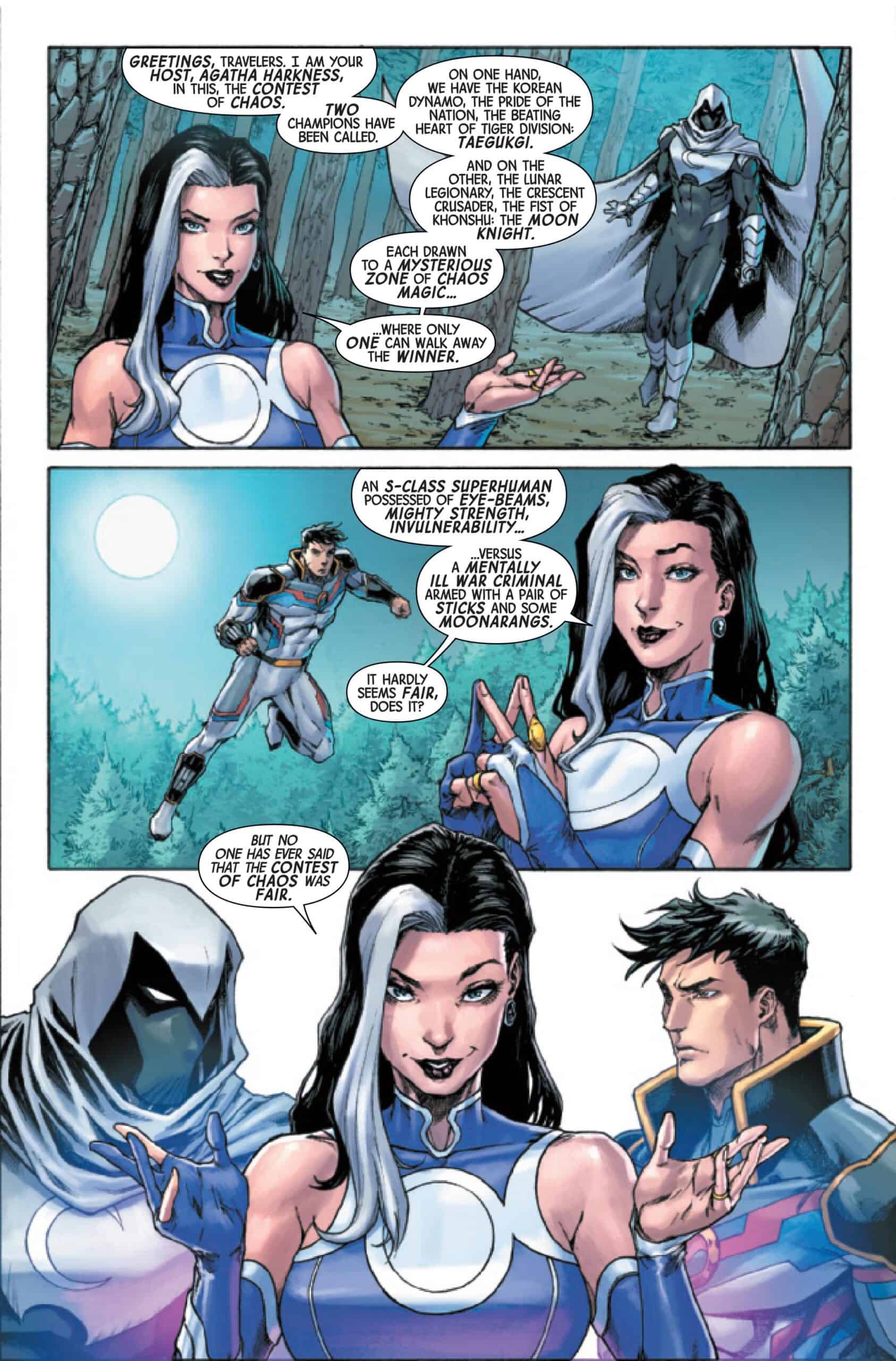
McKay once again proves with this issue his ability to incorporate and weave ongoing continuity into a character’s long-running arc. His writing for the annual allows Moon Knight to prove just how far he’s come since the title’s relaunch back in 2021. MacKay has spun gold from a forgettable Avengers story arc to the point that this issue reminds readers of it. The reference to Age of Khonshu is an organic callback that serves as a last reminder of the long arc before the book enters its endgame later this year.
The pacing for the book is excellent, and MacKay runs with the extended fight sequence to ensure there’s no wasted space in the book. That pairs well with the framing device of Agatha talking directly to the reader, ignoring the fourth wall to serve as a plot accelerant. She manipulates the reality of the story and the frame around it, twisting it to her advantage. It would be easy for a technique like this to feel forced or as a cheap method of exposition. Instead, it’s an excellent showcase of character and delivery that sets a specific rhythm that adheres to previously established continuity.
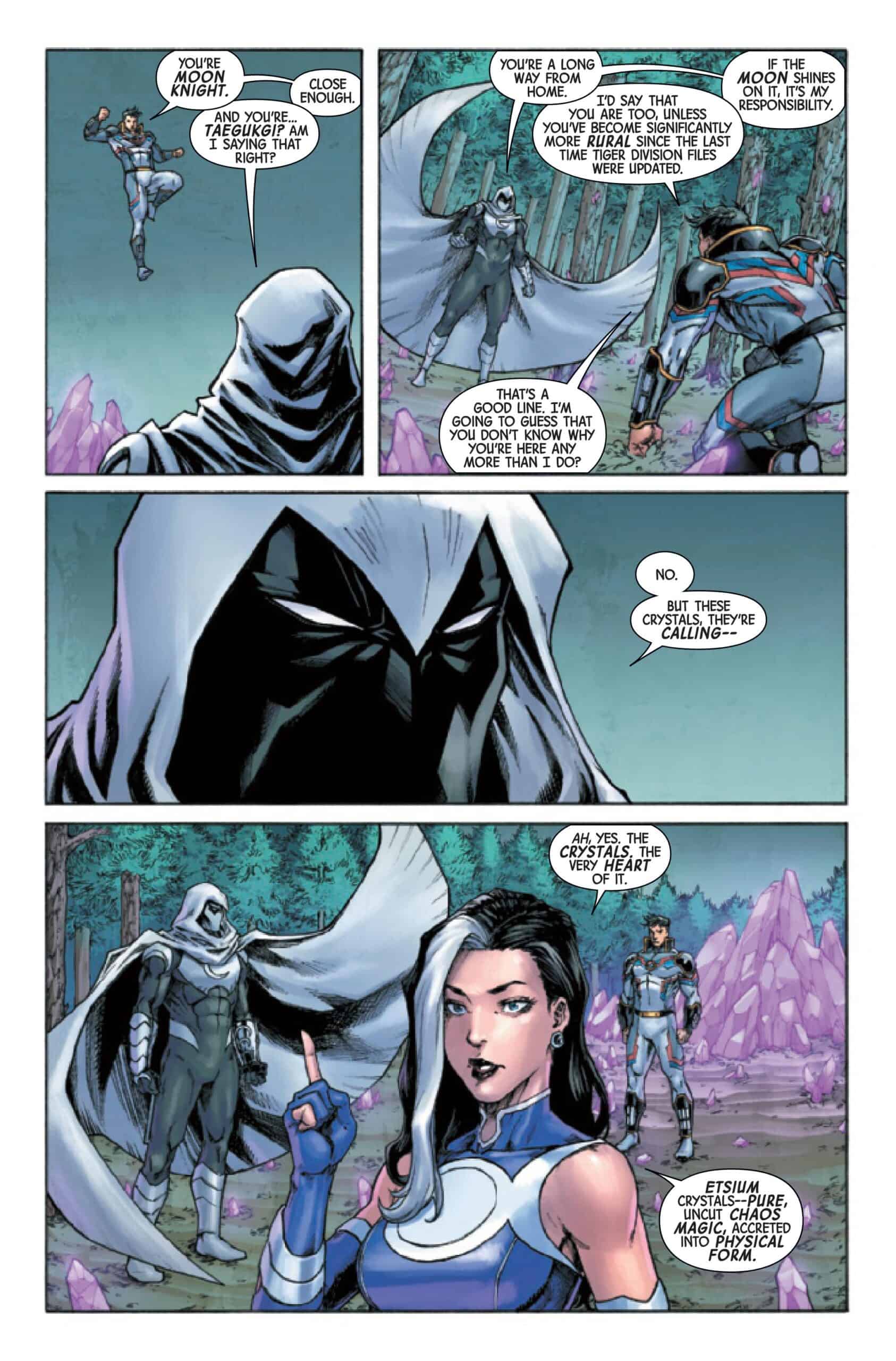
Lee illustrates this well with a clear emphasis on Agatha in the panels, making it clear that she is the subject in the foreground, while Moon Knight and Taegukgi are sent to the background. She creates an interesting axis and evokes the imagery of an announcer flagging fighters to start in the ring, without ever appearing to the two heroes. Lee’s linework plays on the spectral nature of Agatha, giving her appearance a harshness that sells her youth but implies something more sinister below.
Moon Knight is the perfect character for an annual like this one, slotting into the tournament arc set-up with plenty of alternate costumes ready to go. The amount of variations for the vigilante’s costume is staggering, and a guest artist for the annual allows for a showcase of something different from the main line. Here, Lee uses the black and gray number which creates a sharp contrast to the ethereal white of the mainline book’s suit. It also works to compliment Taegukgi’s costume, giving two different looks even before the book makes its temporal shifts.
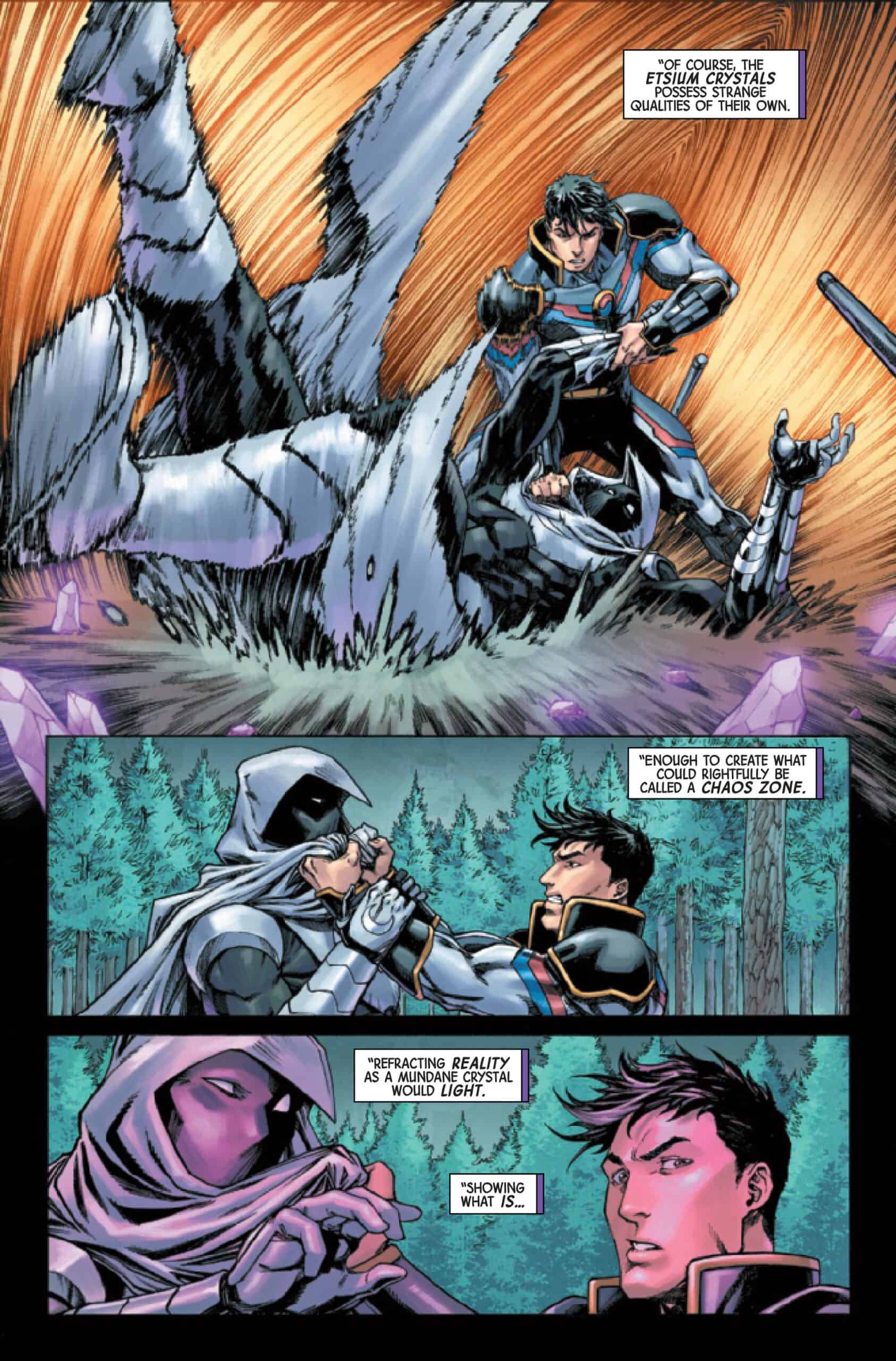
Once the two start fighting, and the bounds of reality start to unravel, Lee gets the opportunity to cut loose and play with the duo’s designs. Moon Knight goes from street-level vigilante to immortal mummy, ascended god, and even Khonshu’s super soldier, while Taegukgi morphs into a literal tiger man, then errant god, and a grizzled crime lord too. Each time, Lee’s action sharpens, incorporating the new looks for the characters to bolster the fight choreography on the page. The opening attack is an intense use of linework to showcase the kinetic movement before the switch to mummy and tiger lets the duo fight beyond human levels, channeling raw power over finesse.
If anything is lacking in the issue, it’s the book’s coloring, which is done by Prianto rather than mainstay colorist Rachelle Rosenberg. Rosenberg has been the essential element of this stretch of the character across multiple titles, and her missing presence is felt here. Prianto’s palettes are solid in a vacuum, delivering interesting flashes of purple for the chaos crystals that clash with the primary whites of both heroes’ costumes. The most interesting use of color for this issue occurs in the final forms of both heroes, specifically in the cosmic, starry elements weaved into Moon Knight’s cloak. It feels like a merging of Eternity and Mr. Knight’s designs, which comes out to a wonderful effect.
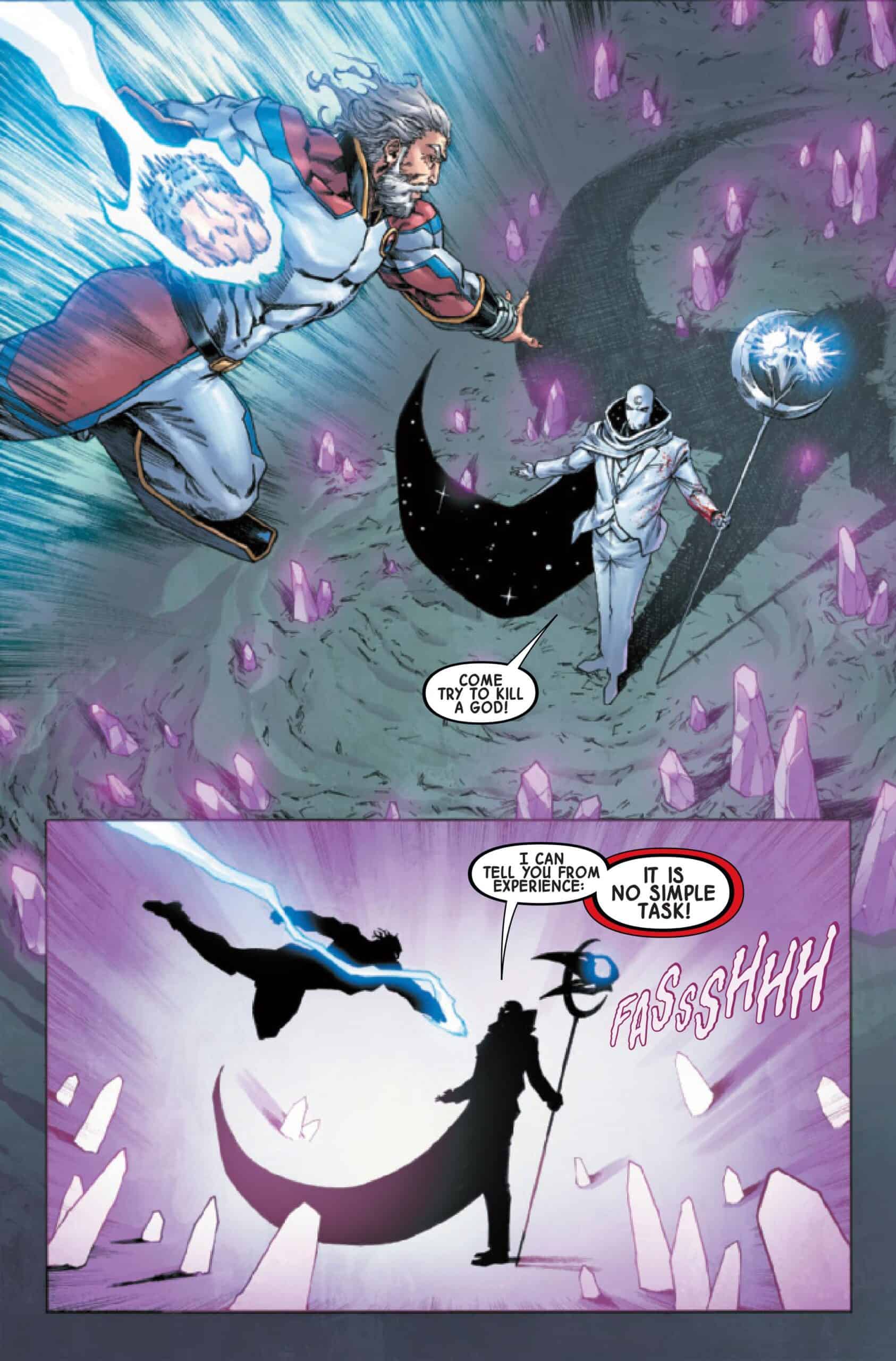
Final Thoughts
Moon Knight Annual #1 is a great tie-in issue, giving MacKay one last opportunity to reflect on the span of his run before it enters the home stretch. MacKay builds off the character arc laid out from Age of Khonshu to the most recent issue, showcasing the personal growth of the Fist of Khonshu. This pairs well with Lee’s expressive, kinetic styling, which plays up the action and bends in reality. Lee’s linework channels the multitudes of both characters’ designs, along with Agatha’s ability to pop on the page and draw focus. The Contest thus far has been Chaotic, but with creative teams like the one on Moon Knight, it’s not hard to see why the character pairings were chosen.
Moon Knight Annual #1: How Far We’ve Come
- Writing - 10/1010/10
- Storyline - 10/1010/10
- Art - 10/1010/10
- Color - 7/107/10
- Cover Art - 8/108/10





